GreenLight Laser Treatment for Benign Prostatic Hyperplasia in Germany
Treatment prices are regulated by national law of the corresponding countries, but can also include additional hospital coefficients. In order to receive the individual cost calculation, please send us the request and medical records.
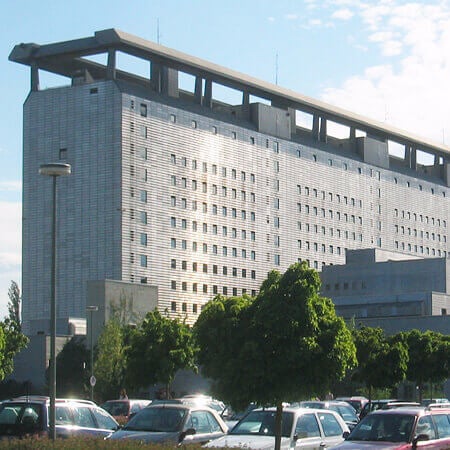
Department of Adult and Pediatric Urology, Andrology
The Department of Adult and Pediatric Urology, Andrology offers the full range of services in the areas of its specialization. Men and boys with diseases of the reproductive system can be diagnosed and treated in the medical facility. Doctors also treat infertility and erectile dysfunction. Medical care is provided to men and women with diseases of the urinary system, namely kidneys, ureters, bladder, and urethra. The department is certified as the Prostate Cancer Center by the German Cancer Society (DKG), which indicates the excellent quality of the services provided in this area. The department's urologists have a perfect command of the innovative treatment methods, including holmium laser enucleation of the prostate (HoLEP), photodynamic therapy, and da Vinci robot-assisted surgery. The department employs comprehensively trained and experienced doctors who apply advanced medical achievements in their practice. Each patient is provided with an individual approach, considering their specific needs and wishes.
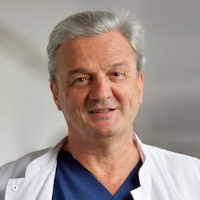






Department of Adult and Pediatric Urology
The Department of Adult and Pediatric Urology provides high-precision diagnostic examinations and effective treatment for diseases of the genitourinary system and reproductive system in men and boys. Of particular interest is drug therapy and surgical treatment of prostate, bladder, kidney, testicular, and penile cancers. The department is part of the Comprehensive Cancer Center Ulm (CCCU). For the patient, this means that their clinical case is studied by a multidisciplinary tumor board, which determines the optimal treatment tactics. The department is also certified by the German Cancer Society (DKG), so all therapeutic procedures meet strict national and international standards. The department's team of urologists also has unique clinical experience in the minimally invasive treatment of kidney stone disease, benign prostatic hyperplasia, neuro-urological dysfunction, and all urologic diseases in children. During the surgical treatment, the specialists at the medical facility successfully use minimally traumatic surgical techniques. They perform endoscopic, laser, minimally invasive, and robot-assisted surgery using the innovative Da Vinci system. The department treats about 3,000 inpatients and 9,000 outpatients with clinical cases of varying complexity annually. The number of surgical procedures performed and treatment outcomes are regularly published by the authorized commission of the Initiative Quality in Medicine (IQM).
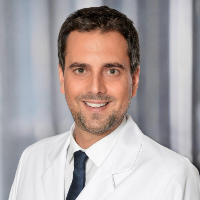





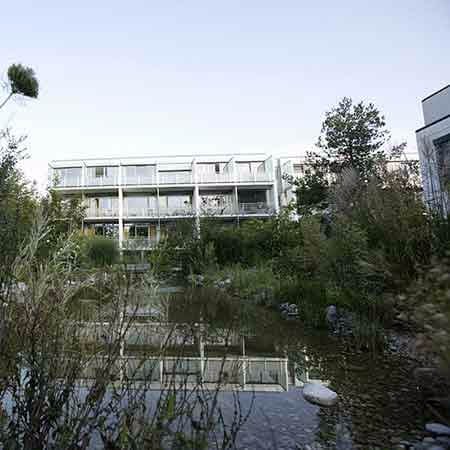
Department of Adult and Pediatric Urology, Andrology
The Department of Adult and Pediatric Urology, Andrology offers the full range of services for the diagnostics and treatment of urologic diseases in men and children, as well as urogynecologic disorders in women. One of the priority focuses of the department's specialization is the restoration of potency in men. According to the international ratings, this is the best hospital in Europe, where a team of urologists effectively treats erectile dysfunction. Another key focus of the department's work is on the treatment of benign and malignant prostate diseases. To treat prostate cancer, the doctors perform low-traumatic robot-assisted interventions using the very latest da Vinci® XI HD surgical system. The therapeutic offer is complemented by the treatment of pathologies of the kidneys, ureters, bladder, testicles and penis. In the field of pediatric urology, the correction of congenital malformations of the reproductive system in boys is of particular interest. The department's doctors are professionals in their area of specialization, so the patients can be sure that they will certainly find an effective solution even for the most complex clinical case.
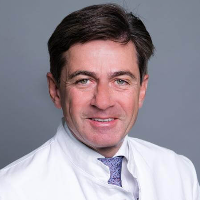
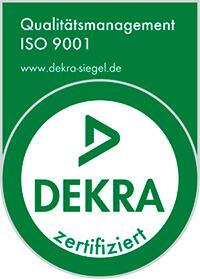
Benign prostatic hyperplasia(BPH) is the most common urological disease in men over the age of 40. The condition develops due to prostate tissue proliferation and compression of the urinary tract. The pathology can be treated by removing or destroying the excess prostate tissue. TURP (transurethral resection of the prostate) is commonly used for small prostate volumes, but a GreenLight laser procedure can also be performed instead. It provides the same results, but without blood loss and with a shorter and more comfortable recovery period. You can find out prices and make an appointment for your treatment in Germany through Booking Health.
Content
- What is GreenLight laser vaporization of the prostate?
- Who may be a candidate for GreenLight laser therapy for BPH?
- How is laser therapy for prostatic hyperplasia (BPH) performed?
- Benefits of GreenLight laser treatment for BPH
- Where can I have GreenLight laser therapy for benign prostatic hyperplasia?
GreenLight laser treatment is a minimally invasive procedure to treat benign prostatic hyperplasia (BPH), a non-cancerous enlargement of the prostate gland.
The GreenLight laser vaporizes excess prostate tissue, reducing obstruction and improving urinary flow in patients with BPH.
GreenLight laser treatment offers a lower risk of complications, shorter recovery time, and less blood loss than traditional BPH interventions.
Men with moderate to severe BPH symptoms who haven't responded to medication or prefer a minimally invasive procedure are potential candidates.
The cost varies depending on the clinic and specific case. Booking Health can provide accurate pricing information for GreenLight laser treatment in Germany.
Contact Booking Health to discuss your case, receive treatment options, and arrange the GreenLight laser procedure at a reputable German clinic specializing in BPH treatment.
What is GreenLight laser vaporization of the prostate?
Photoselective vaporization of the prostate (PVP) with the GreenLight laser is a safe for health and reliable method for relieving the symptoms of benign prostatic hyperplasia (BPH). It has been in medical use since 1997. In more than a quarter of a century, hundreds of thousands of patients have been treated with this method, and many clinical studies have been published, so we know that this procedure provides good and long-term treatment results.
The GreenLight laser with a wavelength of 532 is used to vaporize prostatic tissue. The procedure is virtually bloodless. It is a safer alternative to conventional transurethral resection of the prostate (TURP). It is performed in a similar way. The only difference is that TURP uses an electrode to remove prostatic tissue, while laser vaporization uses a laser to destroy it.
Initially, a crystal laser based on the Nd:YAG laser was used for laser vaporization. Later, the more modern LBO laser was introduced. The commercial name for both systems is GreenLight. The chromophore for these lasers is hemoglobin, the red pigment of blood cells. Hemoglobin absorbs laser energy and heats up. As a result of the laser treatment, prostatic tissue is immediately vaporized.
Lasers of different power levels are used in urology: 80 W, 120 W, and 180 W. The higher the power, the shorter the duration of the laser vaporization procedure for benign prostatic hyperplasia (BPH). There is no difference in therapy outcomes or risk of complications when using GreenLight lasers of different power levels.
Who may be a candidate for GreenLight laser therapy for BPH?
Although the GreenLight laser procedure has been successfully used all over the world, it has not become the "gold standard" for the treatment of prostate adenomas and has not replaced conventional TURP surgery. This is due to the deep thermal damage to surrounding tissue up to 16 mm deep and the lack of material for a histological examination. While doctors can obtain fragments of prostate tissue after TURP and examine them for cancer cells, the GreenLight laser destroys the tissue and leaves no material for further examination.
For these reasons, the GreenLight laser vaporization of the prostate is less commonly used in clinical practice compared to conventional transurethral surgery.
However, the method also has advantages that make the GreenLight laser procedure an important alternative therapy for a certain group of patients.
The treatment procedure is bloodless. Therefore, it can be performed in patients with a tendency to bleeding, for example, against the background of taking anticoagulants for cardiovascular diseases.
The following are indications for the treatment of benign hyperplasia with the GreenLight laser:
- Symptoms of benign prostatic hyperplasia that impair urination and reduce the quality of life
- Prostate volume between 30 and 80 ml
- Low PSA levels (low risk of prostate cancer)
- Increased risk of bleeding
How is laser therapy for prostatic hyperplasia (BPH) performed?
GreenLight laser treatment for benign prostatic hyperplasia is performed under general anesthesia. A catheter is inserted into the urethra and a laser diode is delivered through it to the prostatic part of the urethra. The doctor uses laser energy to vaporize the prostate tissue. The procedure is performed under continuous irrigation with saline solution, which fills the urinary tract, creates a cavity, and allows the doctor to view the surgical field.
The average duration of the surgery is one and a half hours. This is longer than TURP, which typically takes about an hour. However, the cutting-edge GreenLight laser, with its higher power level, offers surgery times comparable to TURP.
The average duration of bladder catheterization after the procedure is 2 days. A hospital stay is 1-2 days. Some German hospitals perform laser vaporization for benign hyperplasia on an outpatient basis (without a hospital stay).
Benefits of GreenLight laser treatment for BPH
The GreenLight laser is used as an alternative to TURP, for the same indications, so it makes sense to compare GreenLight specifically with transurethral surgery when describing the benefits. Photoselective laser vaporization as a treatment method for benign prostatic hyperplasia has the following benefits:
- It is a bloodless procedure
- There is almost no risk of needing a blood transfusion
- The procedure requires less time for bladder catheterization
- Patients need shorter hospital stays
- Lower cost of treatment due to shorter hospital stays
- More comfortable recovery period for the patient
Comparative studies show that GreenLight provides results comparable to TURP. Patients achieve similar maximal urinary flow rates, IPSS (International Prostate Symptom Score) scores, and quality of life. These results have been reported in virtually every major study and analysis, including work by Thangasamy, Zhang, Cornu, and the GOLIATH study, which compared transurethral surgery with the most powerful 180W GreenLight laser.
TURP and GreenLight have the same risks of complications. Both treatment methods may cause erectile dysfunction, urethral stricture, and bladder sclerosis. The frequency of repeated operations for recurrent BPH symptoms is also the same.
In recent years, new techniques for treating prostate adenomas with the GreenLight laser have emerged. A technique of enucleation (excision) of the adenoma has already been developed that combines GreenLight with mechanical en bloc removal of the prostate together with the capsule. This technique has not yet become a standard one but may be introduced into urology in the near future as a method for large-volume benign prostatic hyperplasia.
Where can I have GreenLight laser therapy for benign prostatic hyperplasia?
You can have your treatment in Germany. Many German hospitals use the GreenLight laser to treat benign prostatic hyperplasia (BPH). It is a safe and bloodless procedure. It provides the same treatment results as TURP, but with less blood loss, a shorter hospital stay, and a shorter bladder catheterization.
Doctors in Germany use state-of-the-art, high-power laser systems that reduce the duration of the procedure. During the vaporization of the prostate, urologists adjust the laser power, reducing it when treating certain areas to lower the risk of thermal damage to surrounding tissues. High-quality training and extensive experience of German doctors are the keys to the high efficiency of the procedure and a low risk of complications.
You are welcome to find out the cost of treatment, compare prices in different German hospitals, and make an appointment for your treatment in Germany through the Booking Health website. The Booking Health team will consult you on all questions, help you select the most suitable German hospital, make an appointment for your treatment in Germany on your preferred dates, and take care of your travel arrangements. The cost of treatment in Germany for you will be lower compared to seeking medical help directly from the German hospital due to the absence of additional fees for foreign patients.
Authors:
The article was edited by medical experts, board certified doctors Dr. Nadezhda Ivanisova and Dr. Vadim Zhiliuk. For the treatment of the conditions referred to in the article, you must consult a doctor; the information in the article is not intended for self-medication!
Our editorial policy, which details our commitment to accuracy and transparency, is available here. Click this link to review our policies.
Sources:

